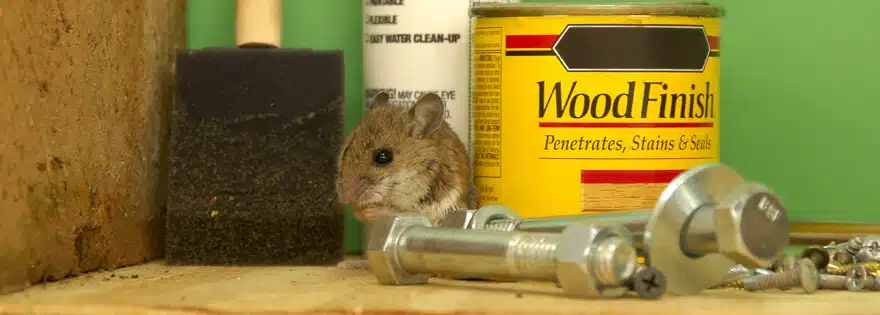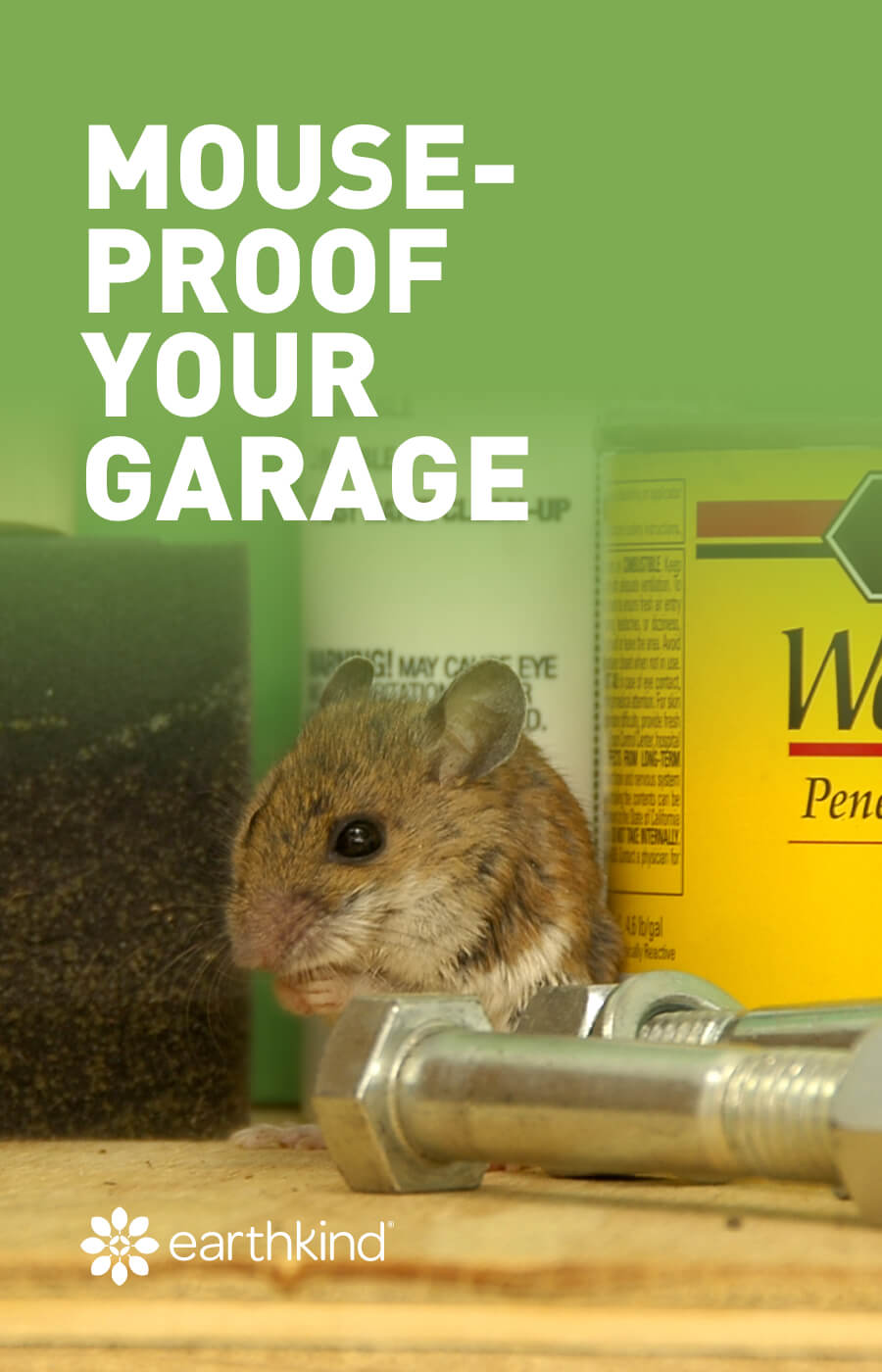How to Get Rid of Mice in Your Garage
By: EarthKind
A garage provides a place to park your car and store items you may not use that often—but it’s typically not a place you spend a lot of time. This makes it the perfect place for rodents to hide, nest, and infest.
A garage is full of clutter which means there are many places for mice and other pests to hide. It’s common to have items such as workbenches, tools, summer toys, holiday decorations, bicycles, and boxes stored in this area. Rodents use these items to climb, jump, and walk across until they find a great hiding place. Even a neat and organized garage gives mice plenty of spaces to find shelter. The stored cardboard boxes and insides of walls are two of their favorite places to build a nest.
Mice survive and thrive by living near people. Just like us, they need food and shelter to survive, so sharing our homes—usually without our knowledge or permission—is an easy choice for rodents. Your garage stays relatively warm and dry in the winter, providing shelter from extreme weather. It also offers protection from predators that threaten rodents like hawks, owls, stray cats, and dogs.
If you store food items in your garage, like dog food, mice will be even happier. These critters have a highly developed sense of smell so they will be able to pick up on these scents—making your garage even more attractive.
Whether you have already encountered an infestation or you want to prevent one from happening in the future, there are several ways to ‘mouse-proof’ your garage that can help.
How Do They Get In?
An average house mouse is pretty small, only about 5-8 inches long including its tail. This means these pests can enter through the tiniest of openings; they only need to fit their little head through, and the rest of their body will squeeze in, too. Cracks, gaps, and holes that are only ¼ of an inch wide—about the size of a pencil eraser—are wide open doors for rodents.
Keep your home pest free with simple, effective solutions. Subscribe and save!
You may think, “The garage door is closed, so I should be safe.” However, most garage doors have small gaps under them that do not seal tightly. If there are drains, pipes, electrical, or utility lines passing through your garage, those areas may also have openings big enough for a mouse to pass through. Dryer vents create opportunities for them to get in as well, so inspect those carefully.
If you notice signs like nests, droppings, or chewed boxes, you already have a problem on your hands. So, it’s time to take action.
How to Keep Mice Out of Your Garage
The easiest way to get rid of mice in garages and make sure they don’t come back is to follow these three steps:
- Clean up clutter that attracts rodents – Clear the clutter that lets mice hide and nest in your garage. Mice love chewing on cardboard; get rid of cardboard boxes in exchange for hard-sided plastic containers with tight-fitting lids. If you store extra food, large bags of pet food, bird seed, or grass seed in the garage; make sure it’s stored in an air-tight, chew-proof container as well. These are all food sources that rodents will love.
- Seal up openings that mice can enter through – Inspect your garage for possible entry points that rodents may be able to fit through. Pay extra attention to the areas mentioned above like doors, dryer vents, and utility lines. Make sure the garage door has an intact seal or door sweep along its bottom. Add weatherstripping to other doors in the space. If you see small cracks, fill them with silicone caulk. Fill small holes and gaps with steel wool; use hardware cloth for larger openings.
- Use a plant-based rodent repellent – Remember the highly developed sense of smell mentioned earlier? Fresh Cab® rodent repellent uses a combination of balsam fir oil and other essential oils to overwhelm little mouse noses and drive them away. If a mouse cannot rely on its nose to find food or avoid predators, it will avoid the area and go somewhere else. Just place Fresh Cab pouches around your garage, and even hang them using a handy pouch pod, to ensure you get rid of mice and prevent them from returning to the space. This bio-pesticide rodent repellent is registered by the Environment Protection Agency (EPA) for use indoors and in enclosed areas. It’s also safe around pets and children when used as directed.
Methods to Avoid
Some homeowners quickly turn to the use of traps to capture mice in garages. However, traps come with their own set of problems.
Snap Traps…
- Are a hazard for children and pets. Pets and children are curious and like to investigate new things. Kids can get hurt by the traps snapping on their fingers (or toes if accidentally stepped on) and pets may try to lick the trap (especially if baited with something tasty like peanut butter).
- You will need to dispose of the mice. Removing dead mice from spring traps is an undesirable task, to say the least. These pests carry diseases and parasites, so you will need to avoid all contact with any you remove from spring traps.
Glue Traps…
- Hold the live mouse until you remove it. You will need to either kill the caught rodent or transfer it to an area far away from your home.
- Cause the creature to suffer. Sticky traps do not kill these creatures, rather they keep them stuck until they starve to death. This is terrible for anyone to witness. The mouse will squeal and cry out.
- Traps can get stuck on creatures they were unintended for. We once heard a story of a sticky trap stuck on a dog’s ear…with a live-squealing mouse attached to the trap too!
EarthKind’s Fresh Cab® repels rodents from treated areas and is an alternative to dangerous traps, harmful chemicals, and expensive pest control bills. Just place a few pouches in your garage area and the rodents will take off and stay away. Find Fresh Cab online or at a retailer near you.








